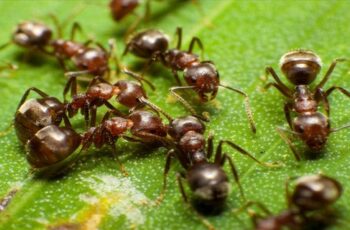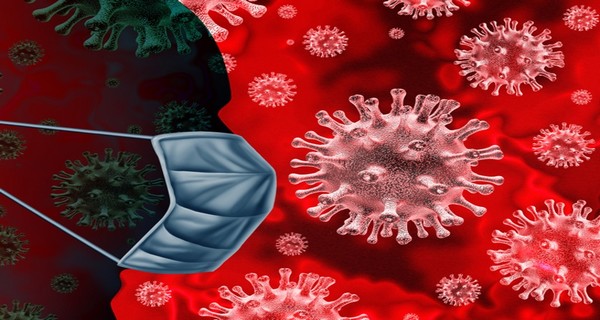Ad Blocker Detected
Our website is made possible by displaying online advertisements to our visitors. Please consider supporting us by disabling your ad blocker.
We have already discussed how eggshells can be used as a calcium supplement for your garden soil, but they also contain phosphorous and potassium, making them an excellent source of fertilizer. If you do not wash the lining out of your eggshells, they also contain nitrogen, making them a well-rounded fertilizer source. Therefore, eggshells are one of the few times when you might not want to wash them before use.
Instead, let the eggshell lining dry into the shells and then crush them. While this may cause some odor issues if stored in the kitchen, the shells typically do not smell too much once they are dried. Another option is to bag the saved shells and store them in the freezer until you are ready to use them.
Eggshell fertilizer is particularly beneficial for plants that require high amounts of calcium and those that are sources of dietary calcium, such as tomatoes, eggplants, peppers, broccoli, cauliflower, kale, chard, and spinach.
For best results, work the eggshell fertilizer a few inches into the ground. You can crush the shells, grind them into powder, or add them to water and water the soil. To give your garden an extra boost, mix the eggshell powder 1:1 with used coffee grounds, which are a rich source of nitrogen. This combination will provide your plants with a well-rounded fertilizer boost.
Make a Foliar Spray or Eggshell Tea
Eggshell tea is a fast and efficient method for extracting calcium and minerals from eggshells and delivering them to plants in a more readily available form.
A foliar spray is a type of fertilizer that enables faster nutrient uptake through the leaves. You can easily make an eggshell tea using your leftover eggshells, which can be used for watering or applied directly as a foliar spray to enhance calcium absorption.
Eggshell Tea/Foliar Spray Recipe
- Rinse and dry 6 to 12 eggshells, then crumble or pulverize them into small pieces. Put them into a heat-safe bowl or container.
- Cover the eggshells in boiling water. Set aside and let steep for 24 hours.
- Strain the eggshells from the water, reserving the water (this is your “tea”). You may discard the shell bits in your compost pile.
- Use the tea to water plants, or pour the tea into a spray bottle for use as a foliar spray.
- If you are using the tea as a foliar spray, you may add several drops (about ¼ tsp) of horticultural oil to the spray bottle to help the spray adhere.
Watering your plants with eggshell tea is ideal for seedlings and indoor plants that have soil that is difficult to amend or cannot be disturbed. It is a rich source of calcium and potassium, making it an excellent booster for stressed plants.
Foliar sprays are also beneficial for indoor and outdoor garden plants, but it is important to avoid using them too frequently as wet leaves can attract disease. It is best to apply foliar sprays when the plants are not in direct sunlight and when they will have enough time to dry without remaining wet for long periods. Mornings, when the sun is not at its strongest, are an ideal time for foliar sprays.
Use Eggshells to Increase Soil pH
When your soil is acidic, it has a low pH level, which can be problematic for many common vegetable plants. While some plants prefer acidic soil, many will struggle unless you take steps to increase the pH and reduce the soil’s acidity. Fortunately, eggshells can be a helpful solution!
To increase the pH of your soil using eggshells, apply a generous layer of small crushed, powdered, or pulverized eggshells over the affected area and mix them into the soil. Work the shells several inches into the ground. Keep in mind that eggshells take time to break down and work, so improvements in soil acidity may not be immediate. This method is best for smaller or localized treatments, as it may be challenging to collect enough eggshells to treat an entire garden. For larger areas, lime is a more available application that takes about the same amount of time to work on the soil’s acidity levels.
Eggshell Pest Control
The use of eggshells as a pest control method for cutworms, grubs, snails, and slugs is a technique that some gardeners swear by, while others claim it doesn’t work. However, since it is a cheap and straightforward method and eggshells are beneficial for your garden anyway, it is worth trying and can potentially offer many benefits.
Eggshells are believed to work similarly to diatomaceous earth in controlling crawling soft-bodied pests. The rough texture of the shells deters slugs and grubs from crawling over them and can cause slicing injuries that ultimately kill them. While scattering eggshells over the ground surface can be effective, using a larger quantity of coarsely-crushed shells to protect specific plants may yield better results (which may explain why the method works better for some than others).
To use eggshells as a pest control method, create a thick layer of coarse eggshells (¼+ inch deep) in a closed circle surrounding vulnerable plants. The circle should be at least two inches wide to create a pathway that is not easily crossed by pests.
Deter Problem Pets and Wildlife
Eggshells have a strong smell that many wild and domestic animals dislike. Cats and deer, in particular, are known to be turned off by the scent, making eggshells a useful addition to your garden.
To make a more significant impact, scatter larger pieces of eggshell in and around your garden areas. Using eggshell tea as a perimeter spray can also be effective. For a stronger smell deterrent, you may opt not to rinse the eggshells and leave the lining intact, as this can produce a more potent odor that sensitive animals will notice but humans may not.
Cats, in particular, do not like walking on eggshells, so placing large pieces or coarse chunks of eggshell in their frequently visited areas can help deter them.
The only downside to using eggshells in this way is that the large pieces may also attract rodents, so it’s important to weigh the benefits against the potential risks and decide what is most critical for controlling pests in your garden.

